Bush lilies: an overview of varieties, planting and care

The bush lily is the cherished dream of many novice florists and amateur gardeners. Indeed, the lush caps of numerous flowers in plants often referred to under the indicated name cannot but arouse admiration. However, experienced flower growers deny the existence of this type of lily, and the unusual structure of plants is explained by completely different reasons. What is so attractive about a lily, which is called a bush, what are its features, how to plant and grow such a plant - we will talk in this article.
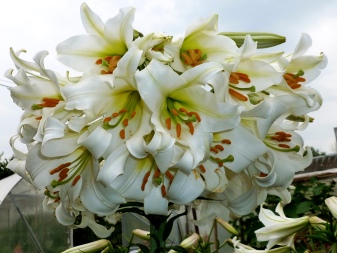
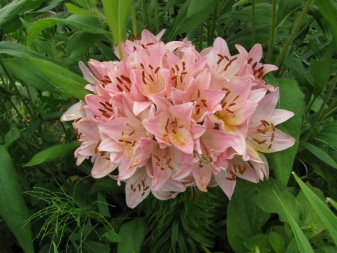
Does a bush lily exist?
Lilies, according to the botanical description, are bulbous herbaceous perennials with leafy stems. The aboveground part of them, like that of other herbaceous plants, dies off at the end of the growing season. With the beginning of the next growing season, green stems develop again from the awakening lily bulbs.
It is customary to refer to shrubs as non-herbaceous or arboreal perennials, in which the aboveground part remains alive during the dormant period. At the end of the dormant period, new shoots in the shrubs are formed from the aerial part. Such processes can be observed on the example of rose hips, gooseberries.
Considering these and other features of bulbous herbaceous and woody perennials, it is safe to say that a lily is not a shrub from a scientific point of view. Therefore, for this reason bush lilies, as an independent species, cannot exist.
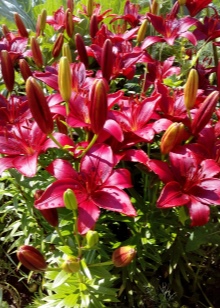

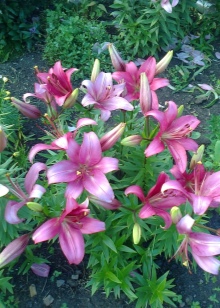
At the same time, many amateur gardeners often use the expression "bush lilies" to refer to plants with a very unusual appearance. Such lilies are strikingly different from other representatives of their kind in their larger size, unnaturally thickened, embossed and dense stem. However, their most striking feature is the unusually large number of flowers and buds. So, on one peduncle there can be from 40 to 100 or more of them.
Visually, the flower “caps” of such lilies resemble a very lush volumetric bush, which partly explains the origin of the unofficial name of the plants - “bush”. Their flowers and buds are often impressively large in size.
The reason for these transformations is fasciation. - an unusual phenomenon in which the stems and peduncles of a plant grow together with each other. As a result, one main stem is formed - thickened and slightly flattened.
At the top, it can split into several short branches with numerous flowers and buds.
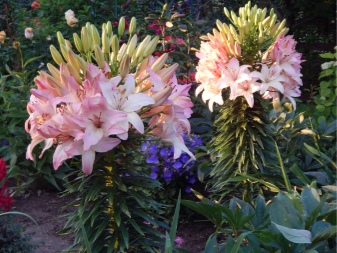
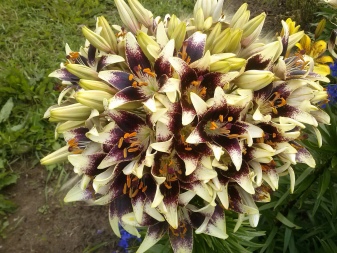
Scientists identify several main reasons for this phenomenon. It is believed that fasciation can occur as a result of mechanical damage to the bulb or growth point (growth cone) during the growing season of plants.
Other reasons include:
- damage by pests or pathogens of viral and bacterial infections;
- the genetic predisposition of the plant (defects and disorders at the genetic level);
- the influence of solar radiation.
Also, according to the researchers, violations of the conditions for growing lilies (high humidity, excessive feeding, improper illumination, inappropriate temperature conditions) can provoke the onset of fasciations.
It should be noted that not all varieties of lilies are susceptible to fasciation. It can develop in healthy plants completely unexpectedly, for no apparent reason.At the same time, it cannot be purposefully invoked.
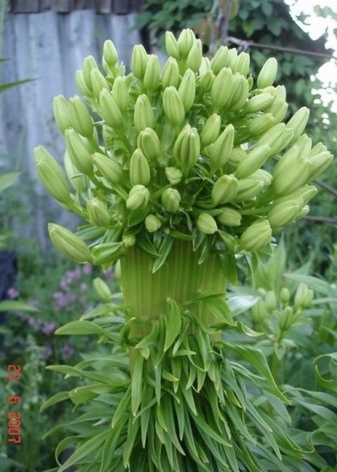
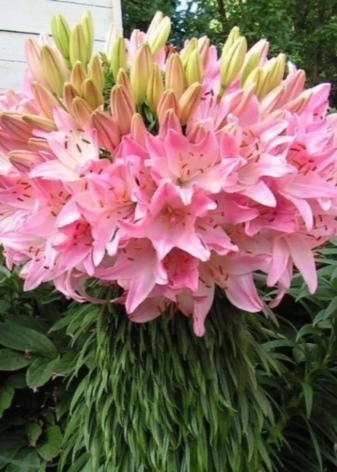
Varieties subject to change
According to experienced gardeners, certain varieties of lilies are most susceptible to the development of fasciation. In particular, these unusual changes often occur with some representatives of the "Asian hybrids" group. Below is a list of varieties that have a high tendency to develop fasciations.
- El divo Is a flowering variety belonging to the LA group of hybrids. The average height of adult plants is 110-130 centimeters. Flowers reach 18-20 centimeters in diameter. The color of the flowers is monochromatic, rich yellow. The beginning of flowering is June-July.

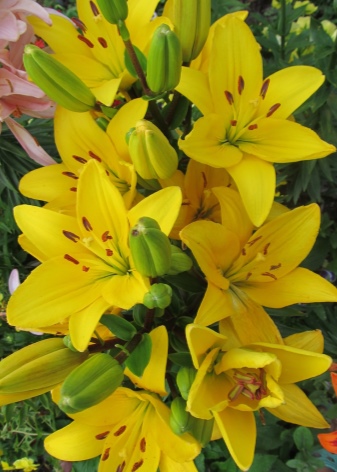
- Marlene - a profusely flowering and relatively unpretentious variety of the group of Asian hybrids. Cold resistant. Plants grow to about 100-110 centimeters in height. During the flowering period, forms numerous buds. Flowers - large (15-20 centimeters in diameter), delicate white-pink color, with a subtle pleasant aroma.
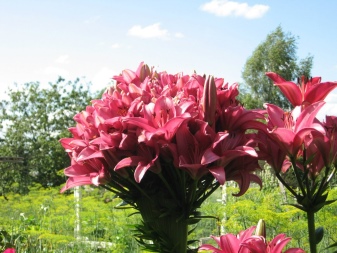

- Graffity - unpretentious, winter-hardy, large-flowered variety, which is part of the group of Asian hybrids. The height of adult plants is about 100 centimeters, the diameter of the flowers is 17-18 centimeters. The color of the flowers is sunny yellow with a bright wine-red speck.
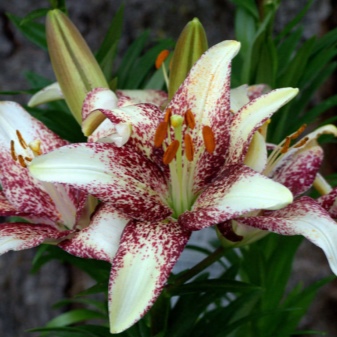
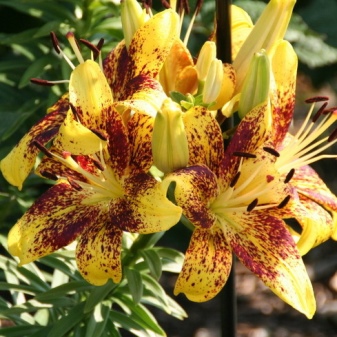
- Spring pink - a very effective terry variety, prone to fasciation. The height of an adult plant can reach 50-100 centimeters. Flowers range in size from 12 to 15 centimeters in diameter. The color of the flowers is pale pink, with small purple specks. Lilies begin to bloom in late June and early July.
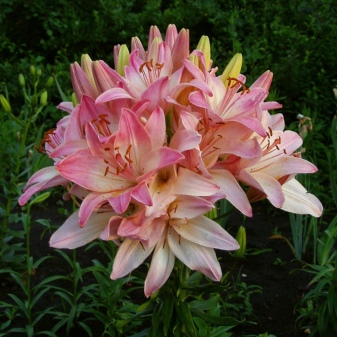
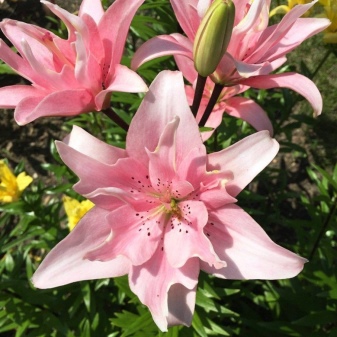
Landing
Lilies prone to developing fasciations are best planted in open, sunny areas. With a lack of lighting, plants bloom less effectively. Experienced gardeners recommend planting such lilies in places where they will be illuminated by the sun for at least 5-6 hours a day.
The place for planting plants must be reliably protected from drafts and strong winds. In addition, water should not stagnate in this corner of the garden.
The soil at the planting site should be loose, well-drained. Ridges with heavy clay soils should first be dug up, peat, leaf humus or sand should be added.
It is recommended to plant the bulbs in September-October. This will allow the planting material to successfully root by the beginning of the new growing season. It is allowed to land in April-May as well.
It is recommended to pre-disinfect the bulbs by placing them in a container with a bright pink solution of potassium permanganate for half an hour.
Damaged scales and roots, if any, must be carefully removed before planting.
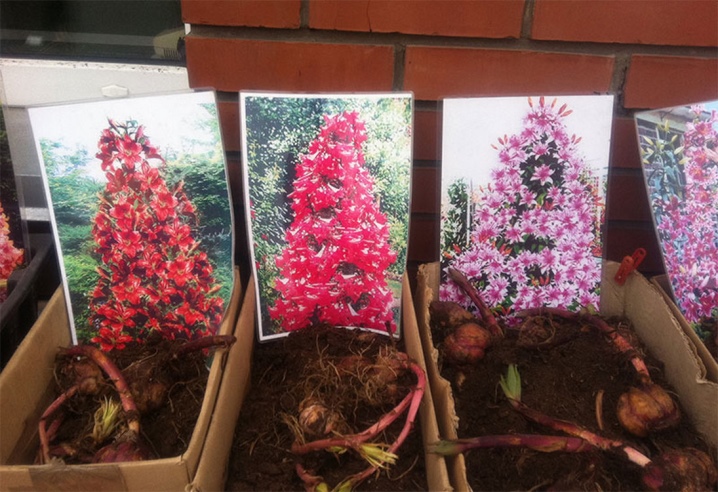
The bulbs are planted in pits to a depth three times their diameter. At the bottom of the holes, a mixture of wood ash and clean river sand is preliminarily laid. The distance between the pits should be at least 35-40 centimeters.
Some gardeners spill pits with fungicidal solutions before planting. This measure allows you to reduce the risk of infection of the planting material with fungal diseases.
The bulbs are placed vertically in the pits, gently straightening their roots and slightly pressing them into the ash-sand pillow. After planting, the bulbs are carefully covered with garden soil. The planting site is well watered and mulched with straw, leaf humus or peat.
Planting (transplanting) of adult plants is carried out with an earthen clod. If there are inflorescences on the lilies, they are cut off. This will preserve the strength of the plant, which is required for him to adapt.
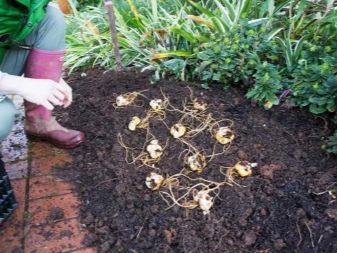
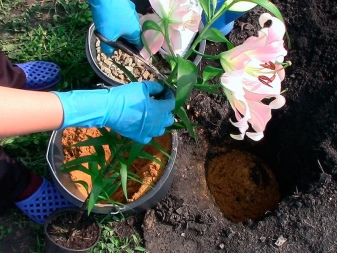
Care features
The main care of plants consists in regular watering, timely fertilizing, loosening and mulching the soil. Lilies, which have a predisposition to fasciation, require special attention during the flowering period.
Watering of perennials is carried out 1 time in 2-3 days. In cloudy and cool summers, the frequency of watering is reduced to 1 time in 7-8 days. Plants should be watered only with settled water.When watering, the stream of water should be directed under the plant so that the spray does not hit the leaves and flowers.
These plants respond well to feeding. The first of them is carried out in the spring - after the snow melts. During this period, the flowers are fed with a solution of mullein (1 liter per bucket of water) or ammonium nitrate (35-40 grams of funds per bucket of water).
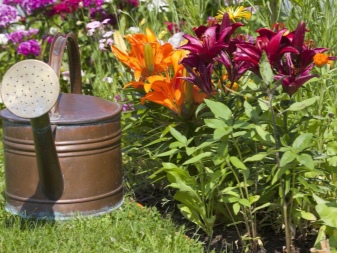
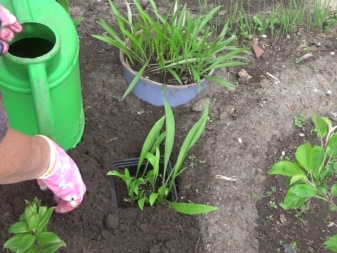
Top dressing is extremely necessary during the period of bud formation and during flowering. At this stage, lilies are fed with phosphorus-potassium complexes. Such effective fertilizers as Fertika Lux or Kemira Lux will help to maintain abundant and continuous flowering.


In the second half of August, it is recommended to feed perennials with double superphosphate. The nutrient solution is prepared at the rate of 20 grams per 10 liters of water.
After each watering, the soil surface around the plants should be slightly loosened and mulched with straw, sawdust or peat.
These procedures will maintain optimal air exchange in the soil and prevent soil moisture loss.
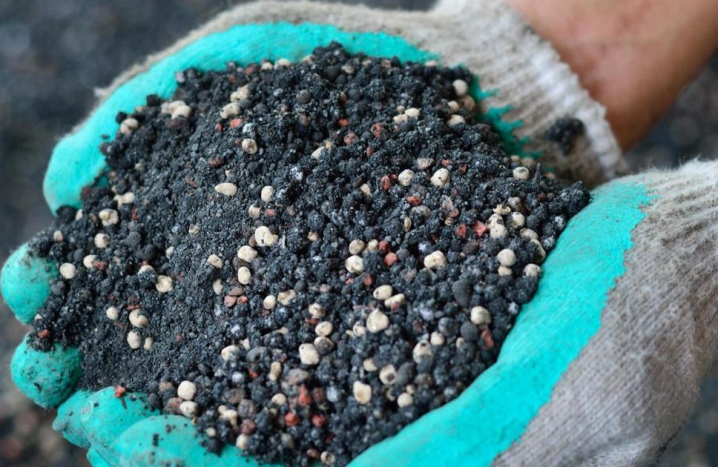
Recommendations
It should be borne in mind that for feeding plants that have undergone fasciation, increased fertilizer rates are used. It is desirable to feed flowering perennials once every 7-10 days. As top dressing, it is recommended to use special complexes for flowering bulbous crops.
The bush lily can break under the weight of the buds and numerous large flowers. For this reason, it is necessary to provide the plant with reliable and stable support in a timely manner. In addition, experienced gardeners recommend not neglecting the removal of excess buds and flowers.

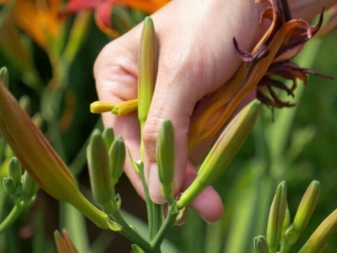
The flowering plant should be protected from drafts and wind, which can cause the buds to fall off and the flowers to fade. In addition, strong gusts of wind can severely damage perennials.
It should be noted that fasciation is a rare and unpredictable phenomenon, the occurrence of which cannot be predicted. Some varieties of lilies can be exposed to it once or several times during their life, others never.
Most often, the next year after fasciation, the plants develop and bloom in their usual way.
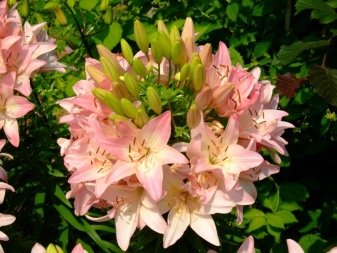

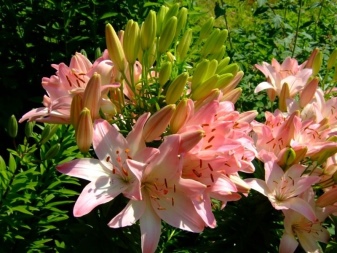

For information on how to care for bush lilies, see the next video.







































































































The comment was sent successfully.